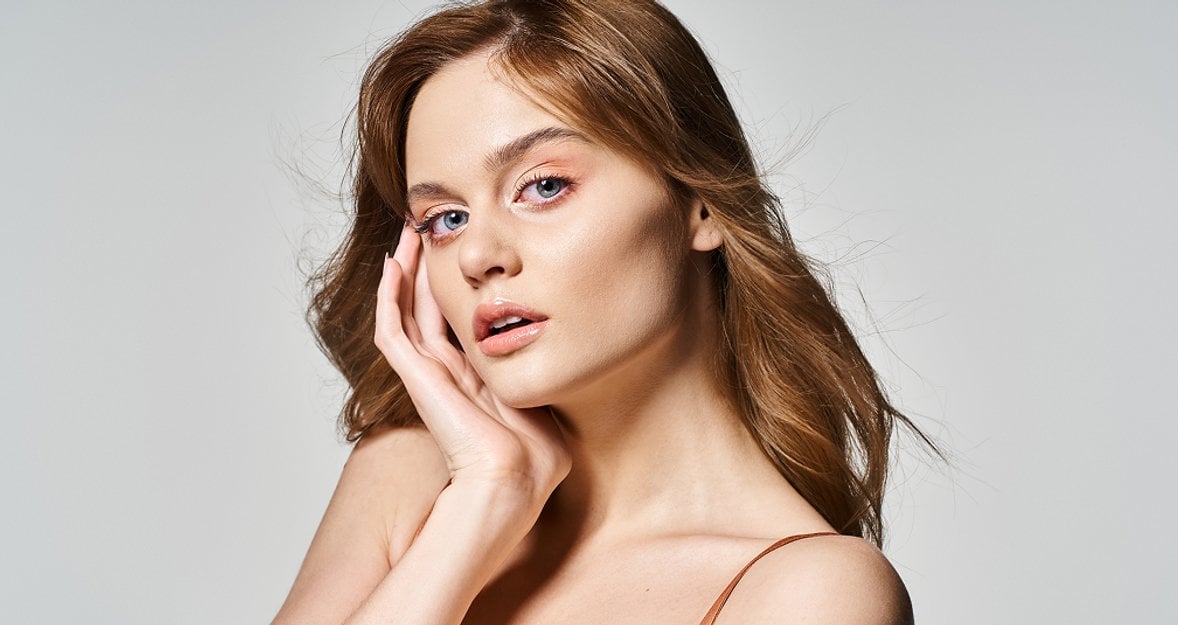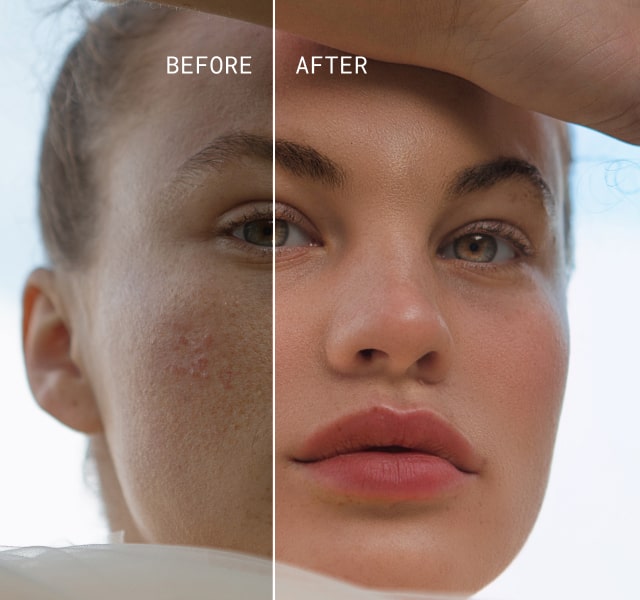How To Erase Hair In Photos Without Messing It Up
July 14, 2025

There are many tricky tasks to deal with when retouching portrait images, but hair is certainly one of the most troublesome. Whether it’s stray strands flying out of place, overlapping facial features, or simply looking dull and lifeless, it all adds up to a substantial challenge.
In this article, we’re going to look specifically at how to deal with stray hairs that break the flow of your image or cover parts of the face.
But don’t worry, there’s some good news. What’s usually a delicate and time-consuming task becomes far simpler when using Aperty. As a portrait-dedicated editing tool, Aperty streamlines your workflow and delivers professional results with ease. It’s user-friendly and doesn’t require hours of study to master, helping you spend less time editing and more time doing what you love most: capturing incredible portraits. So, let’s get started!
Create More, Edit Less – Let AI Handle the Details
Try Aperty NowWhen to Erase Hair
Let’s get you familiar with the hair that you need to work on to preserve a natural look for your subject:
Flyaways: These are strands of hair that break up a clean background. They typically occur around the crown or where the hair is tied or clipped into place.
Stray Hairs: These are hairs that fall across the face, especially those crossing over the eyes or mouth, and should typically be removed.
Hair on Clothing: This may be loose hair or stray hair that has fallen onto your subject’s outfit.
What you’re looking for is hair that’s out of place and appears unintentional in your image. For example, if your subject is making large movements and their hair is trailing behind them, you likely don’t need to erase it, as it looks natural.
You may also want to keep some stray hairs and flyaways for a more realistic look. Ask yourself whether perfectly styled hair suits the vibe of the image or if a bit of realism might work better.
Less Time Editing, More Time Creating
Try Aperty NowHow to Erase Hair: Step-by-Step
Now let’s open up Aperty and start the portrait retouching! Create a new project, then drag and drop your image into the Aperty window so we can get started.
Step 1: Zoom
-5295.jpg?q=85&w=840) To see the stray hairs clearly, zoom in using your scroll wheel or press CMD+Plus (Mac) / Ctrl+Plus (Windows). Drag the screen to focus on the top of the head.
To see the stray hairs clearly, zoom in using your scroll wheel or press CMD+Plus (Mac) / Ctrl+Plus (Windows). Drag the screen to focus on the top of the head.
Step 2: Erase Tool
 In Aperty, the Erase Tool is found on the top bar on the left-hand side. Select a suitable brush size and begin brushing over the unwanted strands. A smaller brush size is recommended so you don’t affect too much of the background.
In Aperty, the Erase Tool is found on the top bar on the left-hand side. Select a suitable brush size and begin brushing over the unwanted strands. A smaller brush size is recommended so you don’t affect too much of the background.
Step 3: Clone Tool
 For more difficult or delicate areas, use the Clone Tool. Click the Erase icon at the top of the screen, then head to the right side where you’ll find the Clone Tool. Adjust the strength and softness, then click to set your source point. Carefully brush over the hair you want to remove. The source point will move with your brush to show what’s being cloned.
For more difficult or delicate areas, use the Clone Tool. Click the Erase icon at the top of the screen, then head to the right side where you’ll find the Clone Tool. Adjust the strength and softness, then click to set your source point. Carefully brush over the hair you want to remove. The source point will move with your brush to show what’s being cloned.
Top Tip: Keep zooming out to check your progress. Over-erasing can lead to an unnatural result, so continually assess your image as you go.
Step 4: The Alternative Approach with Portrait Bokeh
 On the right side of the screen, open the Creative menu (star icon) and find the Portrait Bokeh tool. This won’t suit every photo, but it can help mask stray hairs by subtly blurring them into the background. It’s worth trying to see if it works for your image.
On the right side of the screen, open the Creative menu (star icon) and find the Portrait Bokeh tool. This won’t suit every photo, but it can help mask stray hairs by subtly blurring them into the background. It’s worth trying to see if it works for your image.
No Limits, Just Creativity – Pick a Plan & Start Editing
See PlansTips for Realistic Results
Let’s reiterate a few key points to help you achieve outstanding results and avoid some of the common pitfalls that can occur when handling this delicate task.
Don’t over-erase: Leave some natural flyaways in your shot to maintain a realistic look and avoid the over-processed appearance that can come from removing too much.
Zooming out: To assess how successful your erase or cloning work has been, zoom out regularly and check if the background looks natural. This broader view will help you spot any irregularities.
Avoid hard brushes: Using a hard-edged brush can create harsh lines that make the retouching look obvious. For a more seamless blend, use a soft-edged brush that better integrates the area you’ve edited.
Light consistency: When using the Clone Tool, be sure the area you’re cloning from matches the lighting of the target area. Inconsistent lighting will create visible patches, especially once you zoom out and assess the image as a whole.
Learn more: How to Work With Different Skin Types in Portraits Correctly
The Bottom Line
 Working with hair is often one of the most dreaded tasks for photographers and editors, but with Aperty, it can become a fairly quick and manageable process. Not everyone has the luxury of a hair stylist on location, but the Erase and Clone tools allow you to tidy up any flyaways or loose strands that look out of place. Using soft brushes, you can clean up stray hairs and create a seamless transition between your subject and the background for a natural result. Keep zooming out to check your progress, and for a different approach, consider using the Portrait Bokeh tool to subtly mask unwanted areas.
Working with hair is often one of the most dreaded tasks for photographers and editors, but with Aperty, it can become a fairly quick and manageable process. Not everyone has the luxury of a hair stylist on location, but the Erase and Clone tools allow you to tidy up any flyaways or loose strands that look out of place. Using soft brushes, you can clean up stray hairs and create a seamless transition between your subject and the background for a natural result. Keep zooming out to check your progress, and for a different approach, consider using the Portrait Bokeh tool to subtly mask unwanted areas.
